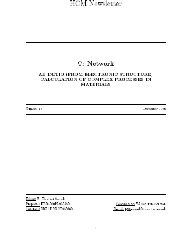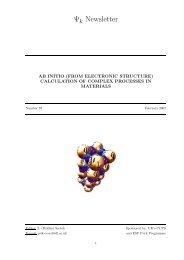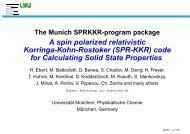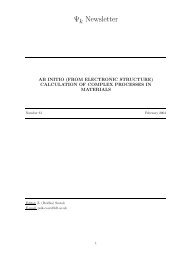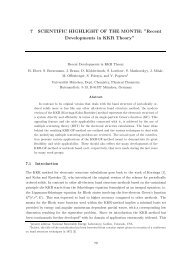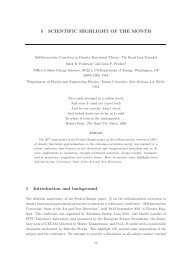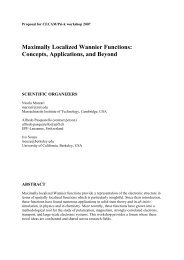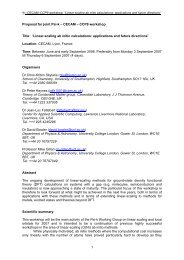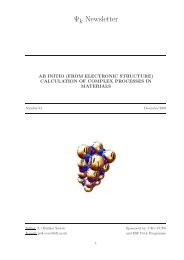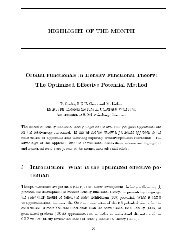Newsletter 107 - October 2011 - (pdf - 0.6 MB) - Psi-k
Newsletter 107 - October 2011 - (pdf - 0.6 MB) - Psi-k
Newsletter 107 - October 2011 - (pdf - 0.6 MB) - Psi-k
You also want an ePaper? Increase the reach of your titles
YUMPU automatically turns print PDFs into web optimized ePapers that Google loves.
Impact of widely used approximations to the G 0 W 0 method: An<br />
all-electron perspective<br />
Xin-Zheng Li 1 , Ricardo Gómez-Abal 1 , Hong Jiang 1 ,<br />
Claudia Ambrosch-Draxl 2 , and Matthias Scheffler 1<br />
1 Fritz-Haber-Institut der Max-Planck-Gesellschaft,<br />
Faradayweg 4–6, 14195 Berlin, Germany<br />
2 Chair of Atomistic Modelling and Design of Materials,<br />
Montanuniversität Leoben, Franz-Josef-Strasse 18, A-8700, Austria<br />
Abstract<br />
Focussing on the fundamental band gaps in Si, diamond, BN, LiF, AlP, NaCl, CaSe, and<br />
GaAs, and the semicore d-state binding energies in ZnS, ZnSe, ZnTe, CdS, CdSe, CdTe,<br />
and GaN, we analyze the well-known discrepancies between the pseudopotential (PP) and<br />
all-electron (AE) G 0 W 0 results. Approximations underlying PP-G 0 W 0 , i.e., the frozen-core,<br />
the core-valence partitioning, and the use of pseudo-wavefunctions, are separately addressed.<br />
The largest differences, of the order of eV, appear in the exchange part of the self-energy<br />
and the exchange-correlation (xc) potential due to the core-valence partitioning. These<br />
differences cancel each other and, in doing so, make the final core-valence partitioning effect<br />
on the band gaps controllable when the semicore states are treated as valence states. This<br />
cancellation, however, is incomplete for semicore d-state binding energies, due to the strong<br />
interaction between these semicore states and the deeper core. The remaining error can be<br />
reduced by treating the outermost two shells as valence shell. However, reliably describing<br />
these many-body interactions at the G 0 W 0 level and providing benchmark results requires<br />
an all-electron approach.<br />
(New J. Phys., submitted (<strong>2011</strong>).)<br />
Contact person: Matthias Scheffler (scheffler@fhi-berlin.mpg.de)<br />
34




